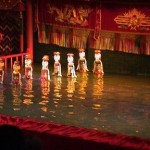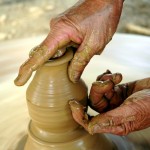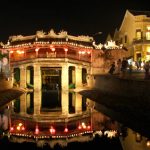Location & Geographical
Hoi An is located on the northern bank of the Thu Bon river in the Quang Nam province, on the south central coast of Viet Nam. The town is about 30 kilometers south of Da Nang city.
Situated on Thu fastfacts8Bon estuary, a net work of waterways about 34 kilometers long, Hoi An is close to the ocean and to many beaches and fishing villages: An Bang beach, approximately 4 kilometers to the north, Phuoc Trach beach, a picturesque beach lined with sheoak trees, and Cam Thanh village, about 3 kilometers east at the mouth of the Thu Bon River, close to the Thuan Tinh sand dunes.
Off the coast is an archipelago of eight small islands. The archipelago has a total area of 15.5 square kilometers, out of which 90 percent is forested, 7 percent farmed and 3 percent inhabited (with a population of around 2,800)
Population
Hoi An has a population of about 83,186 people.
Language
– The official language is Vietnamese.
– Almost all tourist guides speak the following languages: English, Chinese, French, Russian and Japanese. Hoi An people can also speak these languages fluently, with English remaining the most popular foreign language here.
Below you’ll find an overview of the whole year’s climate and weather data for your chosen destination Hoi An, including average rainy days and sunny hours.
Whoever is coming to Hoi An cannot deny that this wonderful place is favored by nature. The climate is considered tropical, with two main seasons: wet and dry. The weather in Hoi An is warm throughout the year, with daily temperatures beyond 80 F (25 C), dropping to mid 70o F (21 C) during night time. Travellers should really take a journey here and enjoy Hoi An weather! The hottest months are June and July, during which time the daily high temperatures will reach mid 95 F (35 C). The nighttime temperatures during these months will drop to around 80 F (25 C). The coldest months of the year are December and January, with daily temperatures in the upper 70 F (21 C), dropping to mid 60 F (16 C) during the nights.
The rainy (or monsoon) season in Hoi An is from September to January, and the dry season from February to May. Flooding usually happens from October to December. All around, the best time to visit Hoi An is between May and June.
Main holidays thoughout the year
• Western New Year Day: 1st January
• Lunar New Year: 1st of lunar January
• Boat Racing Festival: 2nd of lunar January
• Cau Bong Festival: 7th of lunar January
• Nguyen Tieu festival : 16th of lunar January
• Thu Bon worshiping festival: 12th of lunar February
• Whale worshiping festival: 20th of lunar March
• Thien Hau worshiping festival: 23rd of lunar March
• Doan Ngo Festival: 5th of lunar May
• Thanh Ha pottery village: 10th of lunar July
• Long Chu festival: 15th of lunar January and July
• Vu lan day: 14th, 15th of lunar July
• Mid autumn Festival: 15th of lunar August
Economy
– Agriculture
The local agriculture has historically been dominated by the Hoi An people, who generally practice wet-rice agriculture. The land area available for agriculture in Hoi An today is limited, but farming retains an important role in the economic structure of the town.
-Fishing
Given Hoi An’ s location, fishing has also traditionally been an important economical activity. Fishermen in the region utilize a variety of fishing tools and methods, reflecting the variety of origins of the people in Hoi An.
Fishing villages in Vong Nhi, De Vong, Phuoc Trach, Dai An, Tan Hiep catch and process seafood products for both domestic consumption and the export market.
Tourism and service
Tourism and other commercial services combine to make up the biggest economic sector in Hoi An, accounting for 64% of total municipal revenue. This revenue comes from the retail sale of goods to tourists, as well as the provision of accommodation, transportation and other services to tourists.
Currency
The currency of Vietnam is the DONG (VND).
Notes are available in paper denominations of 500,000; 200,000; 100,000; 50,000; 20,000, 10,000, 5,000, 1,000, 500 and 200 VND, and also in coin denominations of 5,000, 2,000, 1,000, 500, and 200 VND.
US dollars remain widely accepted everywhere, but you should have local currency to use in taxis and shops. However, the bills must be relatively new, with no markings or tears.
Traveler’s cheques are easily exchangeable in banks. At commission fee of at least 2% is charged to exchange them into dollars. Credit cards are becoming more popular, especially in the major hotels, restaurants, and cloth shops of Hoi An town. Some ATM machines around the ancient town can accept Visa and Master Card, and some places – especially travel agencies – charge up to 3% commission fee on credit cards.
Business hours
– Governmental agencies work 8 hours/day, from 7.30am to 4.30pm (excluding one-hour lunch). Saturday and Sunday the agencies are closed.
– Banks are open from 7.30am or 8am to 11.30am, and from 1.30pm to 4.30pm. Saturday and Sunday the banks are closed. Avoid doing business from 11.30am to 1.30pm, when people are either at lunch or napping.
– Private shops are open from 8am or 8.30am to 9pm or 10pm.
Time
Standard time zone: UTC/GMT +7 hours
Electricity
Standard 220 Volts AC (at 50Hz cycles). Vietnam uses 220V electricity nationwide. In the south, outlets are often US-style flat pins. In the north, many out-lets fit round pins. As the electrical current varies, use a surge protector when running sensitive electronic equipment suh as laptops.
Telecommunications
International phone charges are steep in Vietnam, and many hotels, especially upmarket ones, add extra fees. Check the rates before dialing. One long-distance service offers a flat fee of around US$0.75 per minute to 50 countries. In order to make the call you muts dial 171, followed by the country code and number.
Weight & measurement
Vietnam uses the international metric system. In addition, there are two weight measurements: the tael and the catty.
Soure : hoian-tourims.com
Post Views:
1,702










